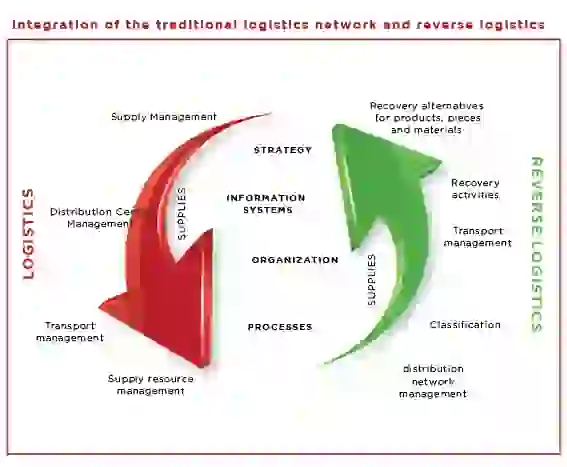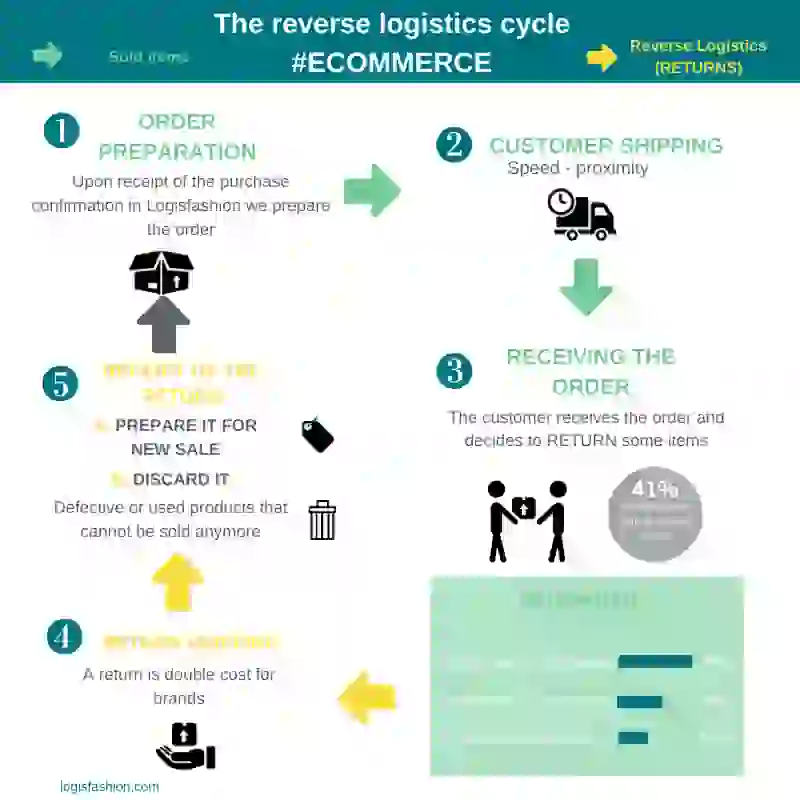How to efficiently address reverse logistics and the management of returns.
We include reverse logistics as part of the Supply Chain, which is becoming more and more important and has an ever-increasing impact on the place where company decisions are made.
In order to successfully address the complex world of reverse logistics management, we must take into account the main objectives of the supply chain:
- Customers: Satisfy the shopping experience. Provide flexibility and reliability.
- Costs: Supply chain integration generates overall cost savings in managing the supply chain.
- Optimisation of resources: Integrate the use of the company’s assets, creating a connection between the processes established for comprehensive management, so that assets can be used in an optimised way (human resources, equipment, raw materials, semi-finished products, finished products).
The main reasons that companies usually take into account in efficiently managing their reverse logistics are:
- Economic: Need to recover the value of the products.
- Legal: Compliance with current legislation regarding returns.
- Social responsibility: This is increasingly more important in everyone’s lives and, moreover, it is a criterion that takes on greater importance in decision-making, due to environmental awareness.

Data on online purchases and returns
In recent years, the growth of e-commerce and established policies on returns have resulted in a considerable increase in the percentages we need to manage, in terms of sales. This goes up as markets become more mature. In countries with mature markets, the proportion of returns increases up to 50%, that is to say, one in two purchasing units ends up becoming a return. This means we need/are required to manage these units in order to make our business profitable.
- In 2018, 44.5% of Spanish internet users made some purchase online.
- 35% made an online return, of which 48% were products connected to fashion, 30% were accessories and 19% were appliances and mobile devices.
- 46% noticed some improvement in delivery times, but only 9% were satisfied with how easy it was to make a return, which shows that there is ample room for improvement in establishing a good return policy.
- The CBRE* states that for every 125,300,000,000 euros in online sales, the costs of returns are 37,635,000,000, which is between 15% and 30% on the total purchases made. In contrast, returns on merchandise purchased in physical stores are at 10%.
How can reverse logistics help you retain your customers?
In the last Christmas campaign, we saw that brands, in order to be more competitive and gain customers in comparison to their competitors, implement an aggressive delivery and returns policy, reducing or eliminating shipping costs. This has an impact on the first month of the year where 70% of the returns are made for the entire year.
The high amounts of unwanted orders increase year after year, and become a challenge for brands, which must be capable of returning the goods to the supply chain as effectively, quickly and cheaply as possible.
Returns play a very important role in retaining customer loyalty, and more so for customers through online channels. 92% of customers will buy again, if they perceive that returns are managed conveniently. If customers do not feel satisfied, 82% say they will not buy again. Therefore, companies need to manage returns effectively, in order to ensure that they retain their customers’ loyalty.
Reverse logistics and the management of returns, from challenges to opportunity.
The main challenges of reverse logistics include the following:
1.- First, the costs; returns have a high cost for retailers, estimated to entail a 4.4% reduction in annual revenue.
2.- Similarly, it has an additional cost in staff and time to handle and reclassify the item.
3.- Additional cost in extra space to handle and store the merchandise. Setting up a specific area in the warehouse to receive all returns.
4.- Also the environmental impact of transporting the merchandise back to the warehouse.
5.- Information systems are critical when dealing successfully with the management of returns. A WMS that is capable, not only of management itself, but also of providing the necessary information for their subsequent management and the processing of the returned units.
The challenge of immediate delivery (24 hours or less) is now being added to be the most effective in managing reverse logistics. The implementation of an effective reverse logistics system results in direct benefits for fashion & lifestyle companies. Improving customer satisfaction, decreasing levels of investment in resources, as well as reducing storage and distribution costs are just to name a few.
“This involves efficient processing of returned merchandise, sometimes establishing the distribution capacity and procedures for handling returns, and others that outsource the process to logistics companies”.
Good management of reverse logistics can turn a problem into an opportunity to gain a customer’s loyalty.

If you want more information about our services (Reverse Logistics or others) and to be contacted by our sales team, write to us at comunicacion@logisfashion.com

